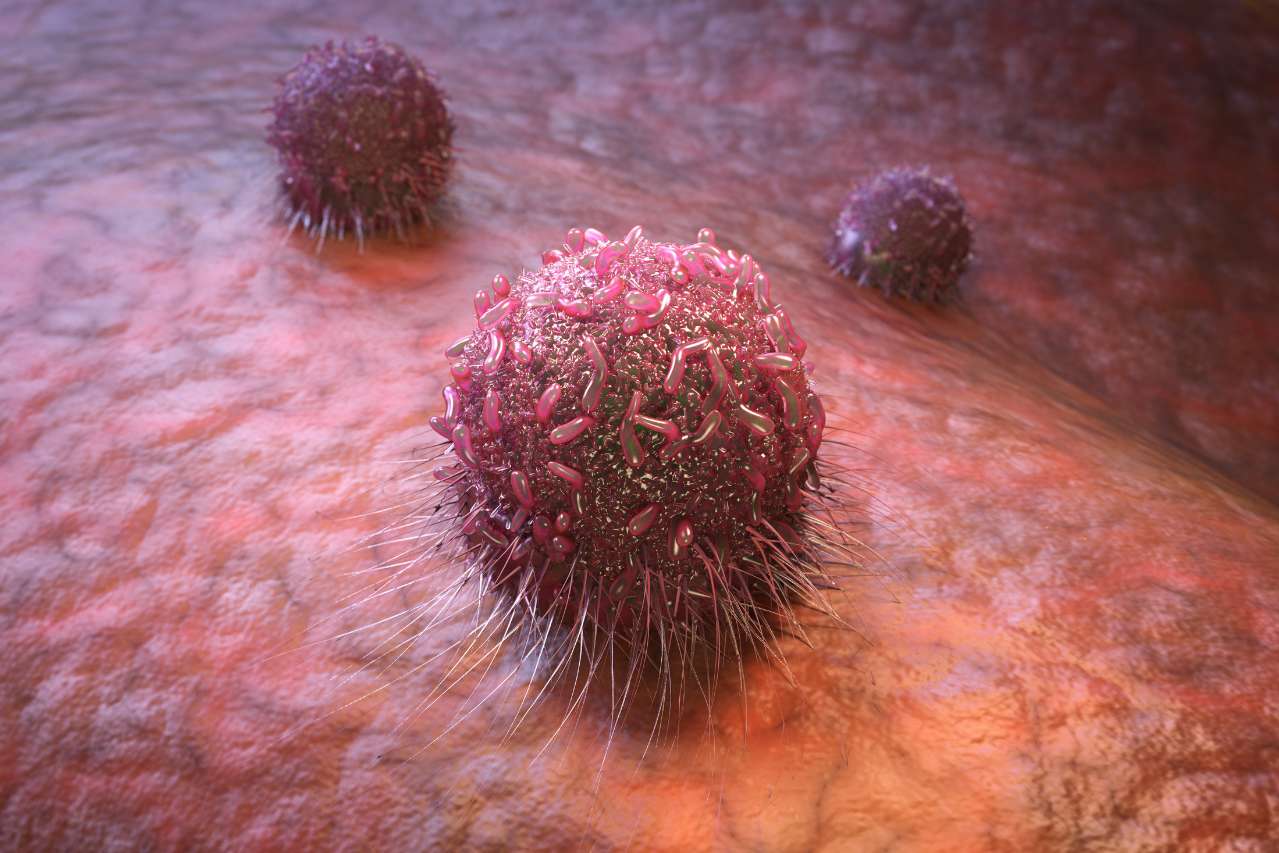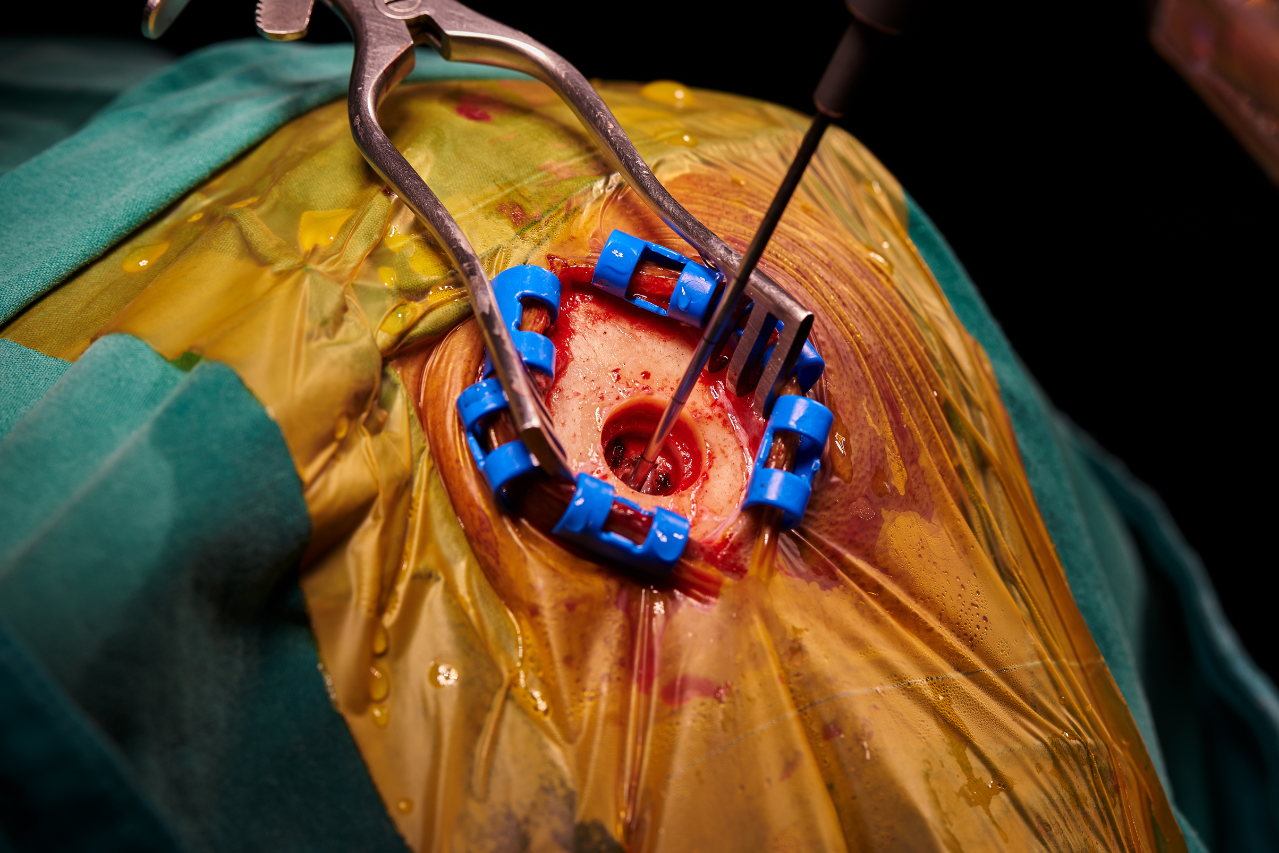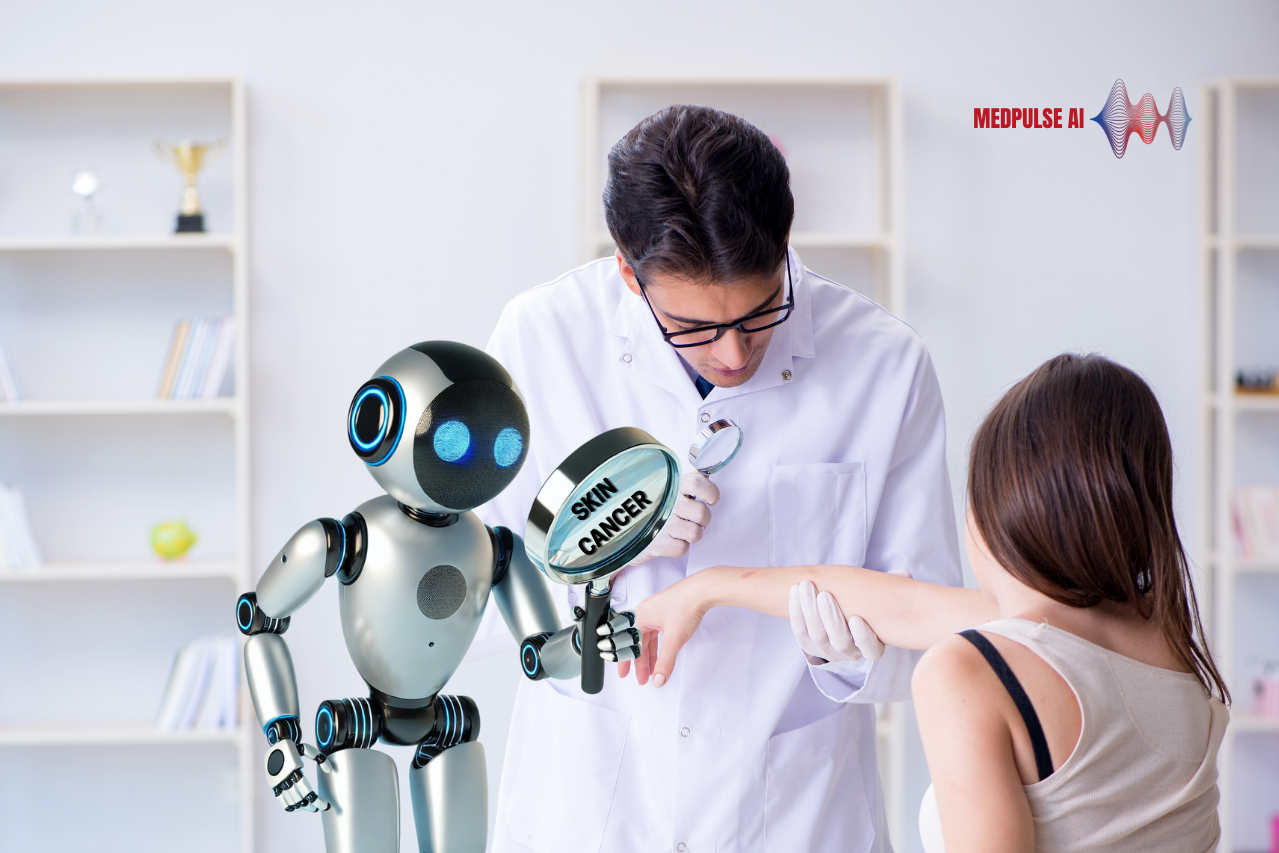Skin cancer is the most common form of cancer globally, with millions of new cases diagnosed each year. The majority of skin cancer cases are preventable, particularly if detected early. Dermatology plays a critical role in the early diagnosis and management of skin conditions that can lead to cancer, but traditional methods of identifying skin cancer, such as visual inspections and biopsies, often rely on the expertise of dermatologists and can be prone to human error.
Artificial intelligence (AI) is rapidly transforming dermatology, particularly in the prevention and early detection of skin cancer. AI’s ability to analyze images, detect subtle abnormalities, and continuously monitor changes in skin lesions has led to more accurate, timely diagnoses and, consequently, more effective preventive care. In this blog, we’ll explore how AI is being utilized in dermatology to revolutionize skin cancer prevention and care, discuss its current applications, highlight real-world examples, and look at the potential future of AI-driven preventive dermatology.
The Role of AI in Skin Cancer Detection
AI’s primary role in dermatology lies in its ability to assist with the early detection of skin cancer by analyzing images of skin lesions and identifying patterns that could indicate malignancy. This process, known as computer-aided diagnosis(CAD), allows AI models to learn from vast datasets of skin images, developing an ability to distinguish between benign and malignant lesions. By doing so, AI can provide dermatologists with additional tools for diagnosing skin cancer earlier and more accurately.
AI-Powered Image Analysis: Machine learning algorithms, particularly deep learning, have become the cornerstone of AI in skin cancer detection. These algorithms are trained on thousands of images of both benign and malignant skin lesions, enabling them to identify specific characteristics of skin cancers like melanoma, basal cell carcinoma (BCC), and squamous cell carcinoma (SCC). As they continue to analyze more images, these AI systems become more accurate at identifying patterns and features that might be missed by human eyes.
One of the most notable examples of AI in skin cancer detection is the development of image-recognition algorithms. A study published in Nature demonstrated that Google’s AI model for skin cancer detection performed on par with dermatologists in diagnosing melanoma. The AI system was trained using over 100,000 dermoscopic images of different skin conditions and was able to distinguish between benign moles and malignant lesions with a high degree of accuracy. The study found that AI correctly identified malignant lesions more often than dermatologists, especially in cases where the visual cues were subtle .
These AI tools are not only improving accuracy but also speeding up the diagnostic process, enabling dermatologists to focus on patients who are most at risk, while reducing unnecessary biopsies of benign lesions.
An AI-powered technology for preventive dermatology is the SkinVision app, which allows users to take a photo of a mole or skin lesion and receive an immediate risk assessment. The AI algorithm behind SkinVision has been trained on a large dataset of skin images and is designed to assess the likelihood of malignancy based on various factors, including color, texture, and size of the lesion.
The app provides users with a “low risk,” “medium risk,” or “high risk” assessment, encouraging those in the medium or high-risk categories to seek further evaluation from a dermatologist. A study published in JAMA Dermatology found that SkinVision’s AI-powered risk assessment had an accuracy rate comparable to that of dermatologists, demonstrating its potential as an effective tool for skin cancer prevention in everyday settings. With millions of people using smartphones, AI tools like SkinVision empower individuals to take a proactive approach to skin health, ensuring suspicious lesions are identified earlier.
Continuous Monitoring and Early Intervention
Early detection is a key factor in preventing skin cancer from progressing to more advanced stages. AI is not only aiding in one-time diagnostics but also providing tools for continuous monitoring of skin lesions over time. This aspect of AI-driven dermatology is particularly valuable in preventing skin cancers by identifying changes in moles or other skin lesions that could indicate the onset of malignancy.
AI in Mole Mapping and Tracking: Most people, particularly those at high risk for skin cancer (such as people with a history of sun exposure, fair skin, or a family history of skin cancer), have multiple moles and skin lesions that require monitoring. Traditionally, patients may rely on annual skin checks or manually tracking changes in their moles using photos, but this process is often inconsistent and subjective.
AI-driven tools, such as the MoleScope app, allow for automated mole mapping, where the software takes high-resolution images of a patient’s skin and tracks changes over time. The AI algorithms used in these apps can detect subtle changes in a mole’s size, shape, or color that could indicate the development of skin cancer. Regular monitoring allows for early intervention, as dermatologists can act quickly when a change is detected.
A study published in The Lancet Oncology demonstrated that AI-driven mole mapping tools, combined with dermatologist consultations, led to earlier detection of melanoma in high-risk individuals. The study found that patients who used AI-powered mole monitoring were more likely to detect skin cancer at an early stage, significantly improving survival rates and reducing the need for invasive treatments.
AI and Dermatoscopic Image Analysis: In addition to mole mapping, AI is being used to enhance the analysis of dermatoscopic images. Dermatoscopy, a non-invasive technique that allows dermatologists to examine skin lesions with magnification and polarized light, provides detailed insights into skin structures that are not visible to the naked eye. AI algorithms trained on dermatoscopic images can identify patterns within the skin that are associated with different types of skin cancer.
AI-driven dermatoscopic analysis tools, such as the one developed by IBM Watson Health, are helping dermatologists diagnose melanoma and other skin cancers more accurately. By comparing new images with previously taken images, these AI systems can flag any changes that might be indicative of malignant transformation. This type of preventive care is particularly valuable for patients who may not visit their dermatologist frequently, as AI ensures that even the smallest changes in their skin are detected.
AI in Personalized Skin Cancer Prevention
One of the most promising aspects of AI in dermatology is its ability to offer personalized prevention strategies for individuals based on their unique risk factors. Skin cancer prevention typically involves general recommendations, such as avoiding excessive sun exposure, using sunscreen, and wearing protective clothing. However, these broad guidelines may not address the specific risks faced by each individual. AI’s ability to analyze large datasets, including genetic information, lifestyle factors, and environmental exposure, allows for a more personalized approach to skin cancer prevention.
AI-Driven Risk Prediction Models: AI is being used to develop risk prediction models that can assess an individual’s likelihood of developing skin cancer based on their personal and environmental factors. These models analyze data such as a person’s age, skin type, family history of skin cancer, history of sunburns, and geographic location (which may affect UV exposure) to provide a personalized risk assessment.
For example, a study published in JAMA Network Open showed that AI-driven risk prediction models could accurately predict which individuals were at higher risk of developing melanoma based on a combination of genetic data, personal health history, and UV exposure patterns. These AI models can be used by dermatologists to offer personalized advice on skin cancer prevention, such as more frequent skin checks for high-risk individuals or the use of specific sunscreens that are most effective for their skin type.
Personalized UV Protection and Monitoring: AI-powered tools are also being developed to help individuals monitor their UV exposure and receive personalized recommendations for sun protection. Devices like La Roche-Posay’s UV Sense, a small wearable sensor that tracks UV exposure throughout the day, are using AI algorithms to analyze UV patterns and provide personalized recommendations to users.
The sensor, which can be worn on the skin or attached to clothing, pairs with an AI-powered app that gives real-time feedback on UV levels, recommending when to apply sunscreen or seek shade based on the user’s skin type and daily exposure. A study published in The Journal of Investigative Dermatology found that personalized UV monitoring, coupled with AI-driven recommendations, led to a significant increase in sunscreen use and other sun-protection behaviors, reducing the risk of skin cancer among users .
The Benefits of AI in Dermatology for Skin Cancer Prevention
AI’s role in dermatology for skin cancer prevention offers numerous benefits that are improving patient outcomes and making preventive care more accessible and personalized. These benefits include:
- Increased Accuracy: AI systems can detect subtle changes in skin lesions and identify early signs of skin cancer with a level of precision that may exceed the capabilities of human dermatologists. This increased accuracy leads to earlier detection and intervention, significantly improving the chances of successful treatment.
- Accessibility: AI-powered dermatology tools, such as smartphone apps for skin cancer risk assessment, make preventive care more accessible to a broader population. Patients who may not have access to regular dermatology consultations can still monitor their skin for potential issues using AI technology. This democratization of care is particularly important in underserved areas where access to healthcare providers is limited.
- Continuous Monitoring: AI-driven tools for mole mapping and lesion tracking provide continuous monitoring of skin changes, allowing for earlier intervention if a mole begins to exhibit characteristics of malignancy. This type of continuous care is essential for individuals at high risk of developing skin cancer.
- Personalized Prevention: AI’s ability to analyze individual risk factors allows for personalized prevention strategies, helping patients make informed decisions about their skin health. Personalized recommendations, such as targeted sun protection measures or specific screening intervals, are more effective at reducing skin cancer risk than generic advice.
- Reduced Need for Invasive Procedures: By improving the accuracy of skin cancer detection, AI reduces the number of unnecessary biopsies of benign lesions. Patients are less likely to undergo invasive procedures if AI tools can provide a high level of confidence that a lesion is non-cancerous.
Future Directions and Challenges
While AI is already making significant contributions to skin cancer prevention, the future holds even greater potential. As AI algorithms continue to improve and become more sophisticated, they may be able to analyze even more complex datasets, including molecular information and patient-specific environmental exposure, further enhancing personalized care.
However, the implementation of AI in dermatology is not without challenges. One of the key concerns is the potential for bias in AI algorithms. If the datasets used to train these AI models are not diverse enough, there is a risk that certain populations, such as people with darker skin tones, may not benefit from the same level of accuracy as others. A study published in The Lancet Digital Health emphasized the need for diverse datasets when training AI models to ensure that AI tools are effective for all skin types .
Moreover, while AI tools are highly effective at identifying potential skin cancers, they are not a replacement for professional medical advice. Patients should always consult a dermatologist if they notice any changes in their skin, and AI should be viewed as a complementary tool rather than a standalone solution.
AI is revolutionizing dermatology by offering new tools for the early detection and prevention of skin cancer. From AI-powered image analysis and mole mapping to personalized prevention strategies, these technologies are helping to improve patient outcomes by identifying skin cancers at earlier stages and providing more accurate risk assessments.
As AI continues to evolve, its potential to reduce the incidence of skin cancer and improve overall skin health is immense. By enabling continuous monitoring, providing personalized recommendations, and making preventive care more accessible, AI is shaping the future of dermatology in ways that promise to enhance the quality of care for millions of people worldwide.
Sources:
- “AI and Skin Cancer Detection: A Clinical Study,” Nature, 2019.
- “AI-Powered Skin Cancer Prevention Tools: A Review of SkinVision,” JAMA Dermatology, 2021.
- “AI in Mole Mapping and Melanoma Prevention,” The Lancet Oncology, 2020.
- “AI in UV Monitoring and Personalized Skin Protection,” The Journal of Investigative Dermatology, 2020.
- “The Importance of Diverse Datasets in AI for Dermatology,” The Lancet Digital Health, 2021.




